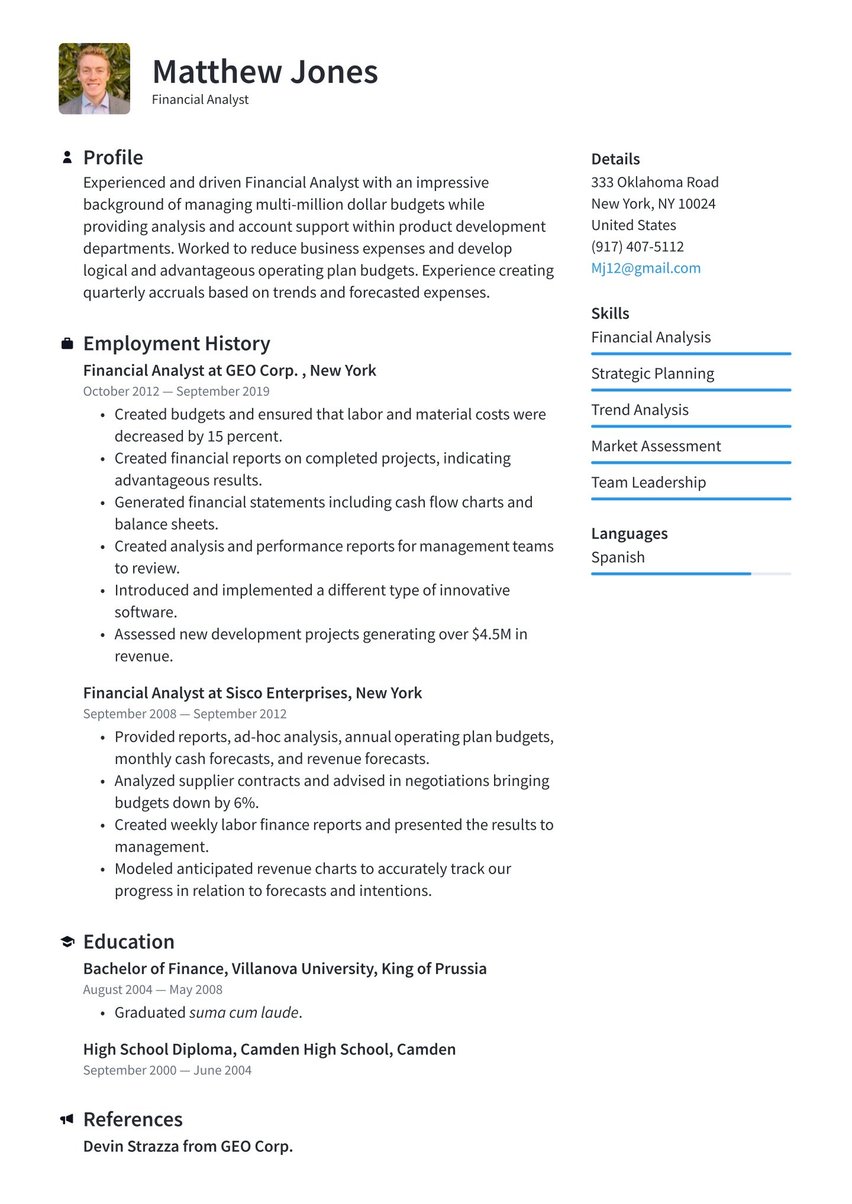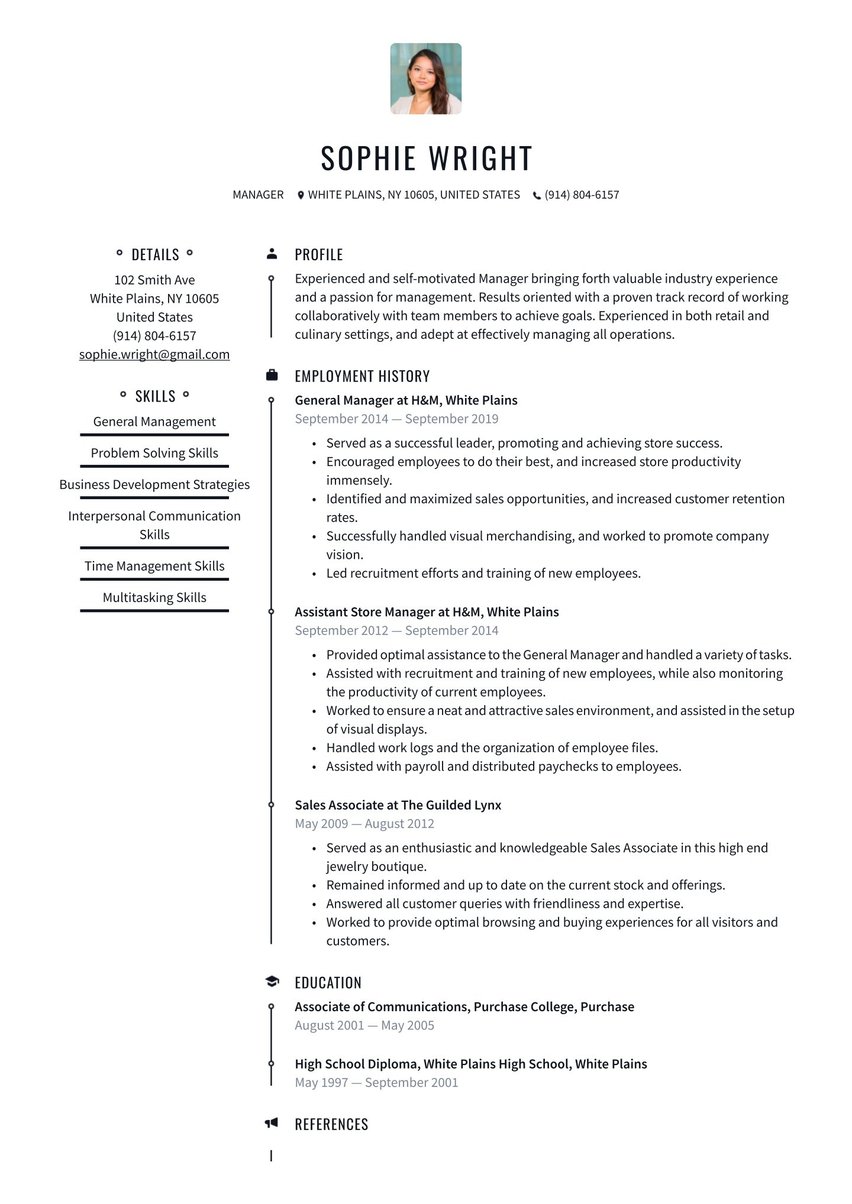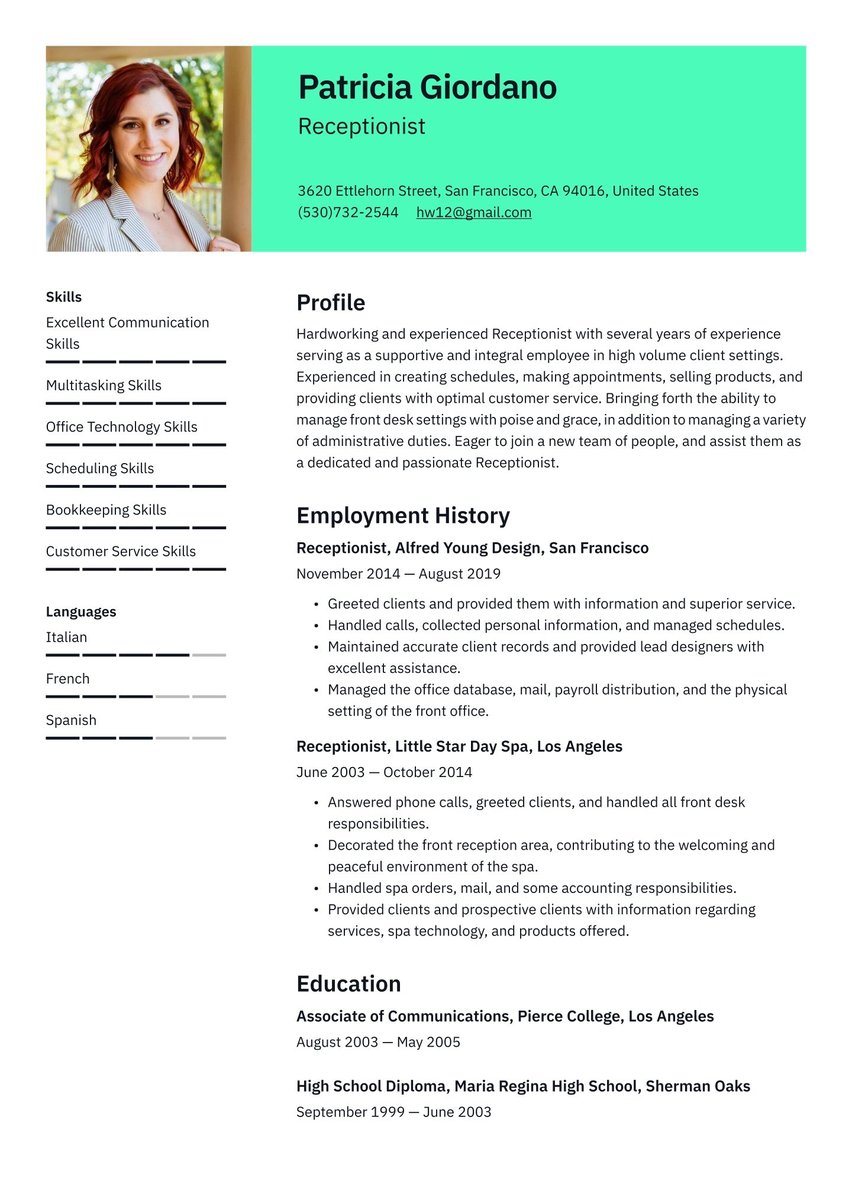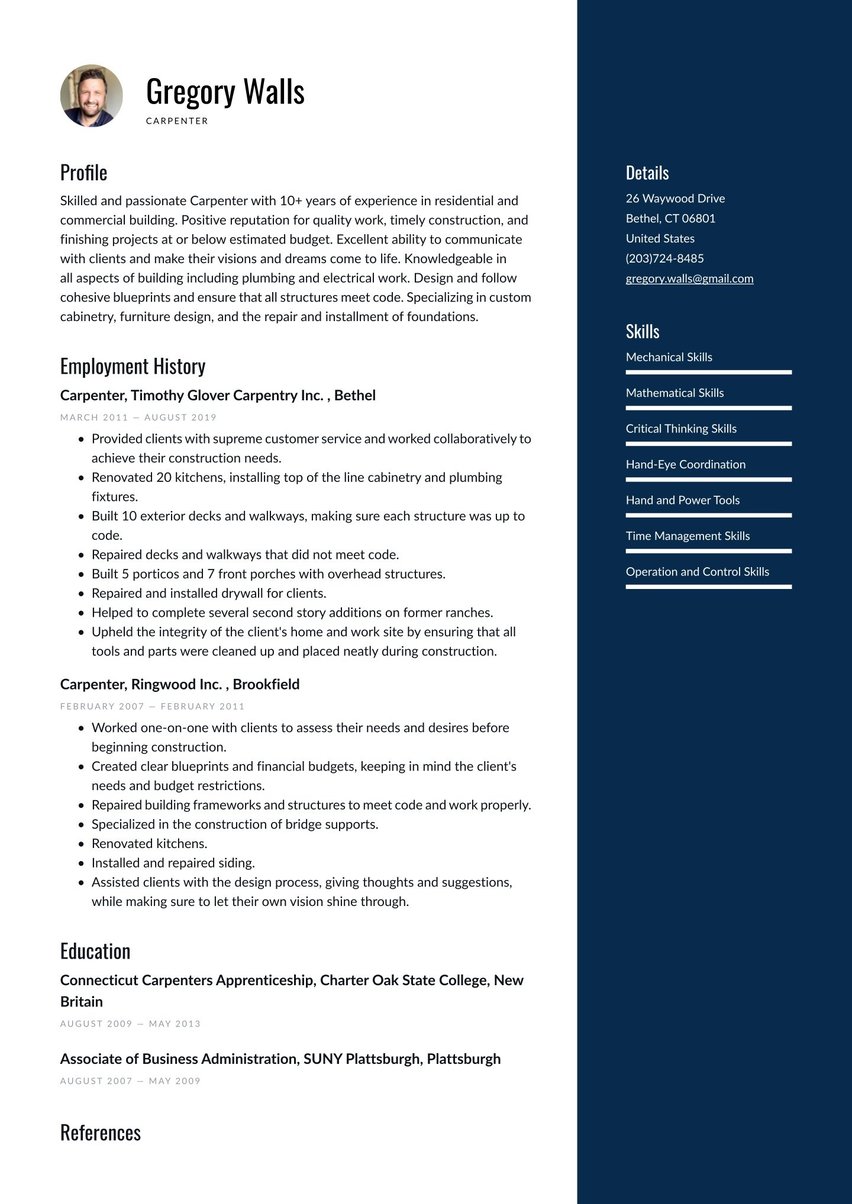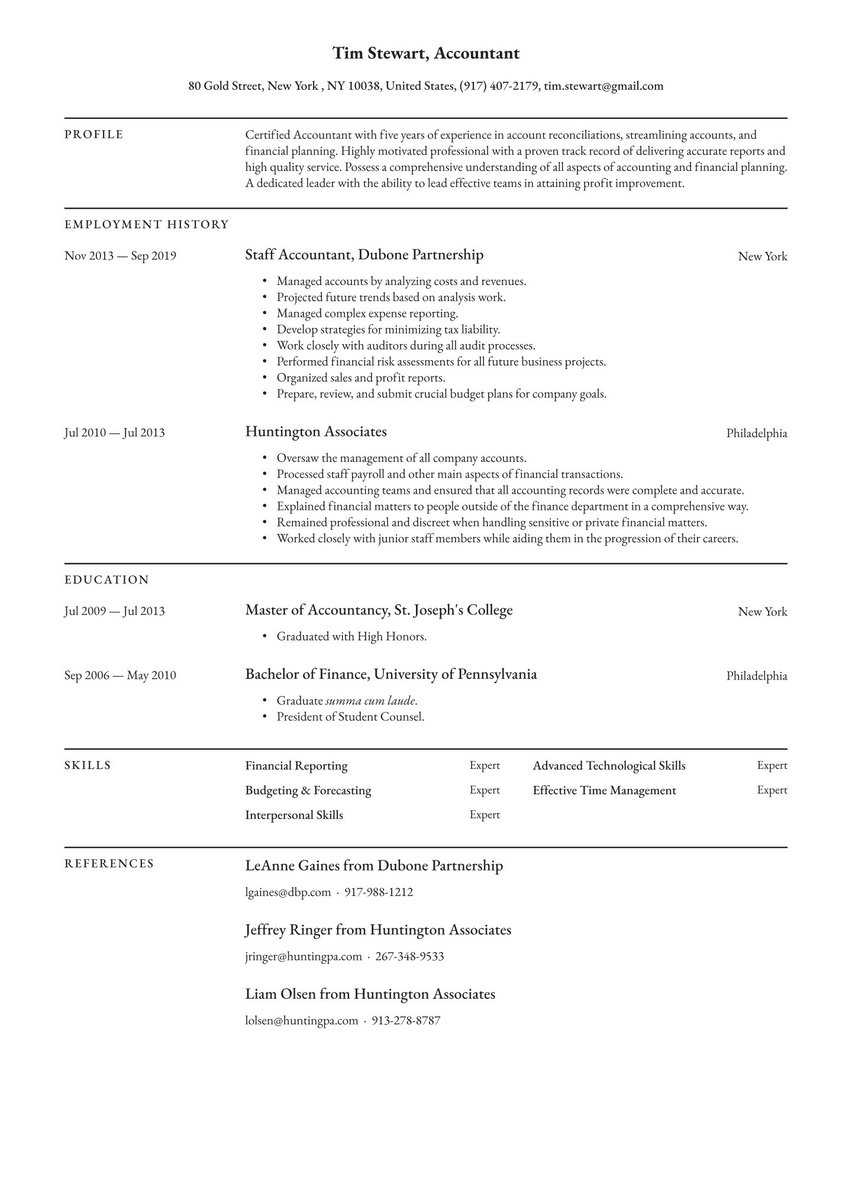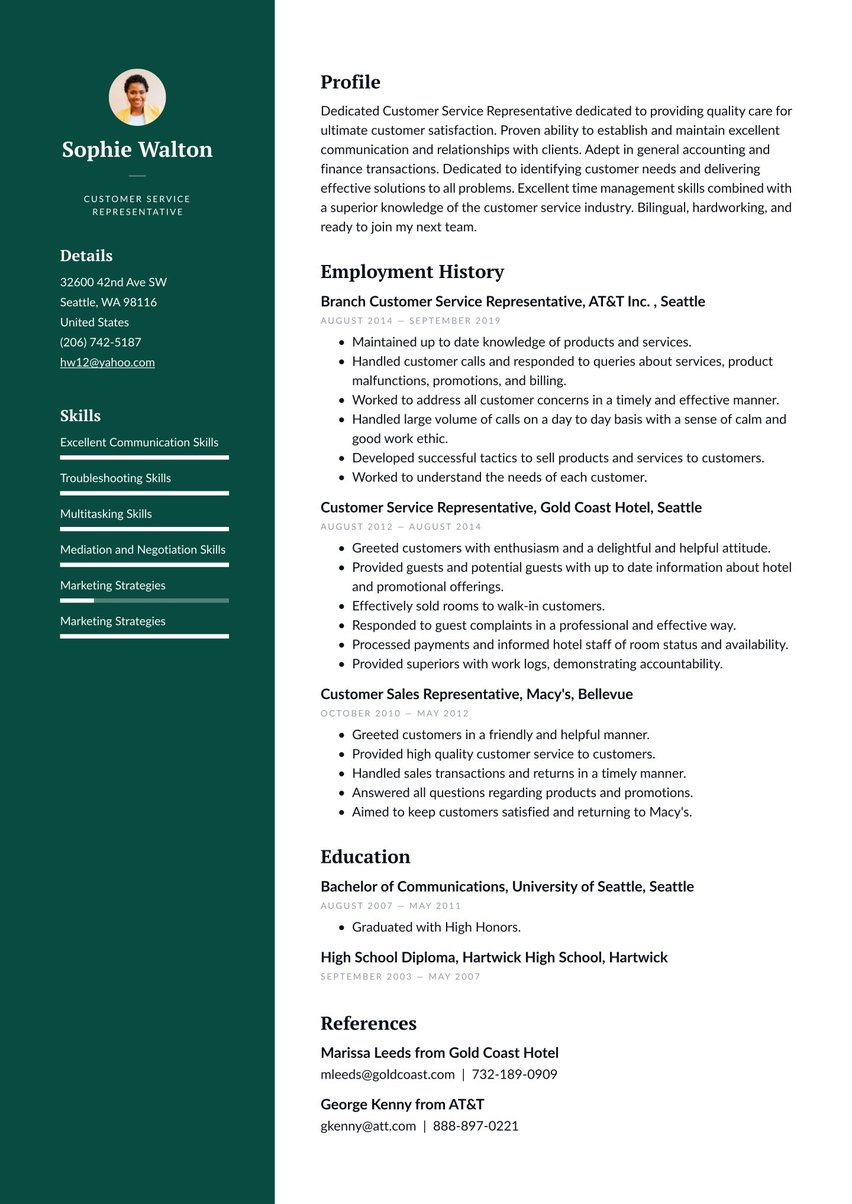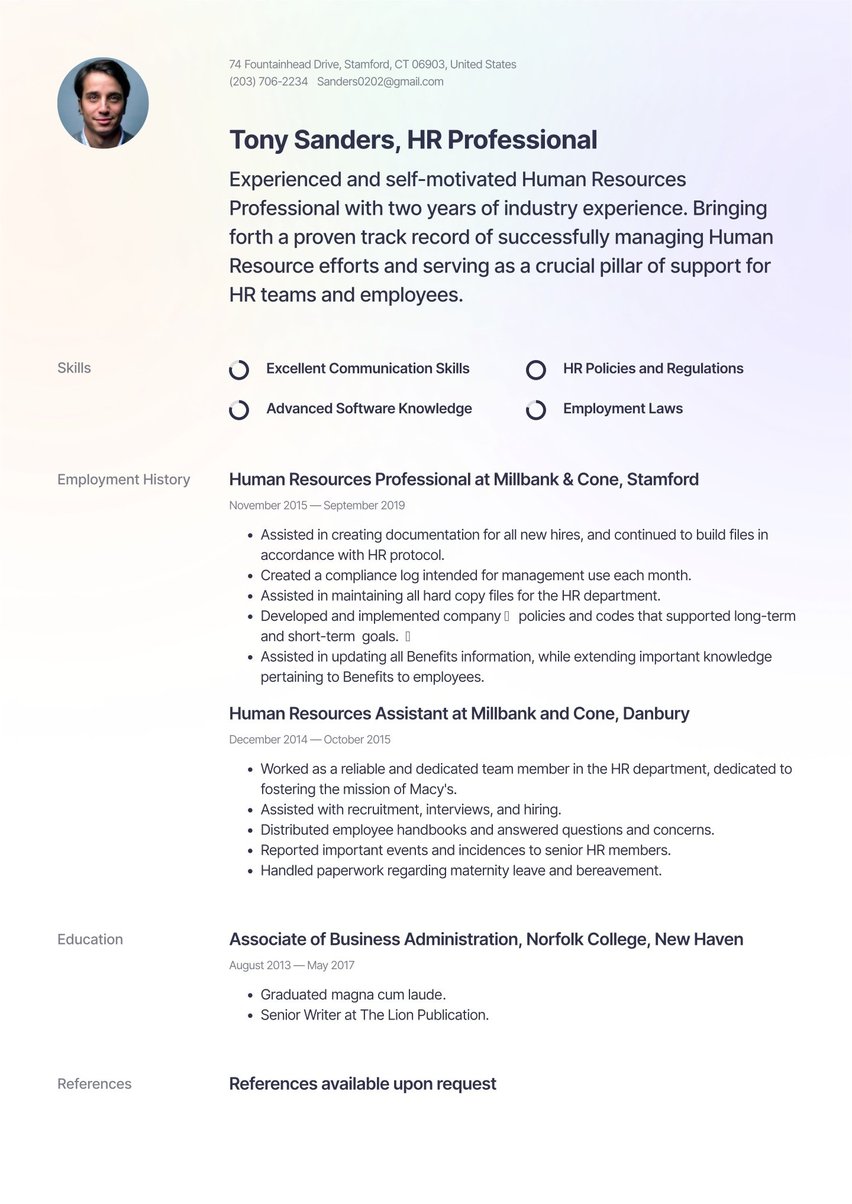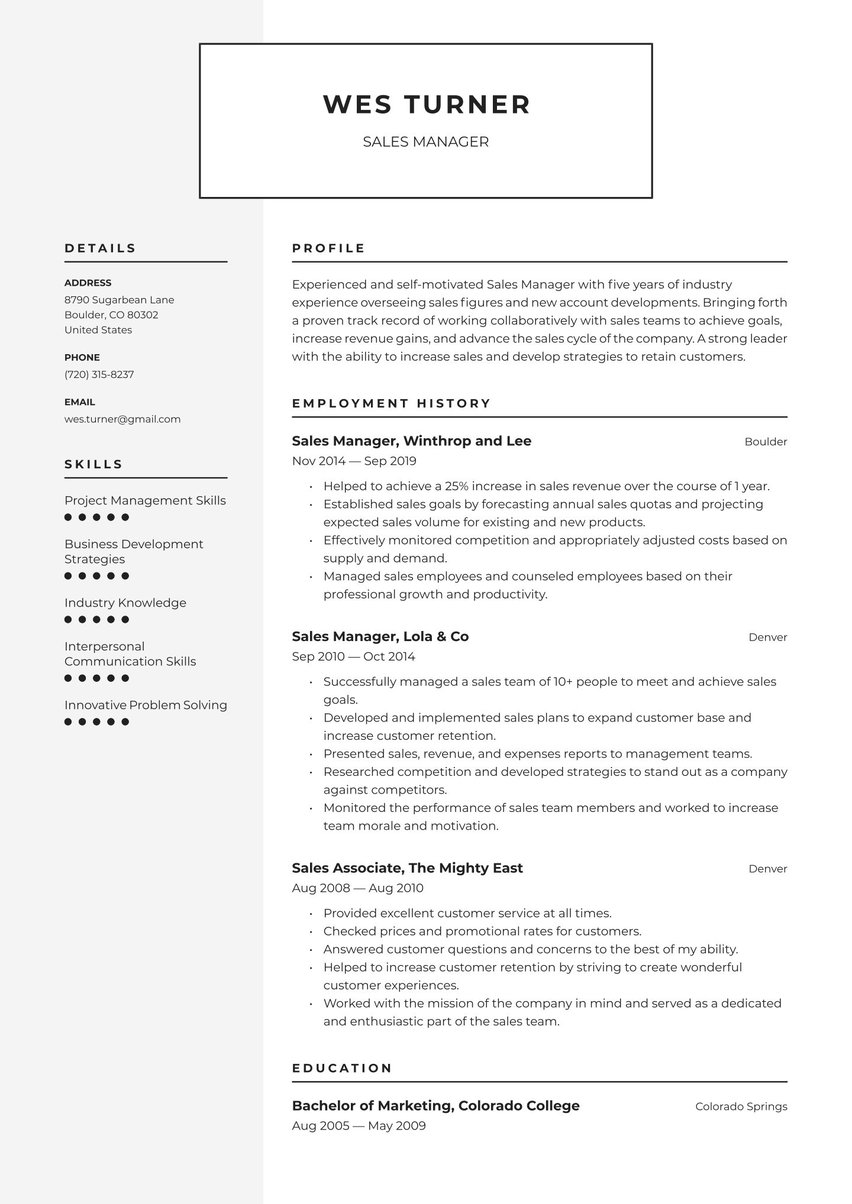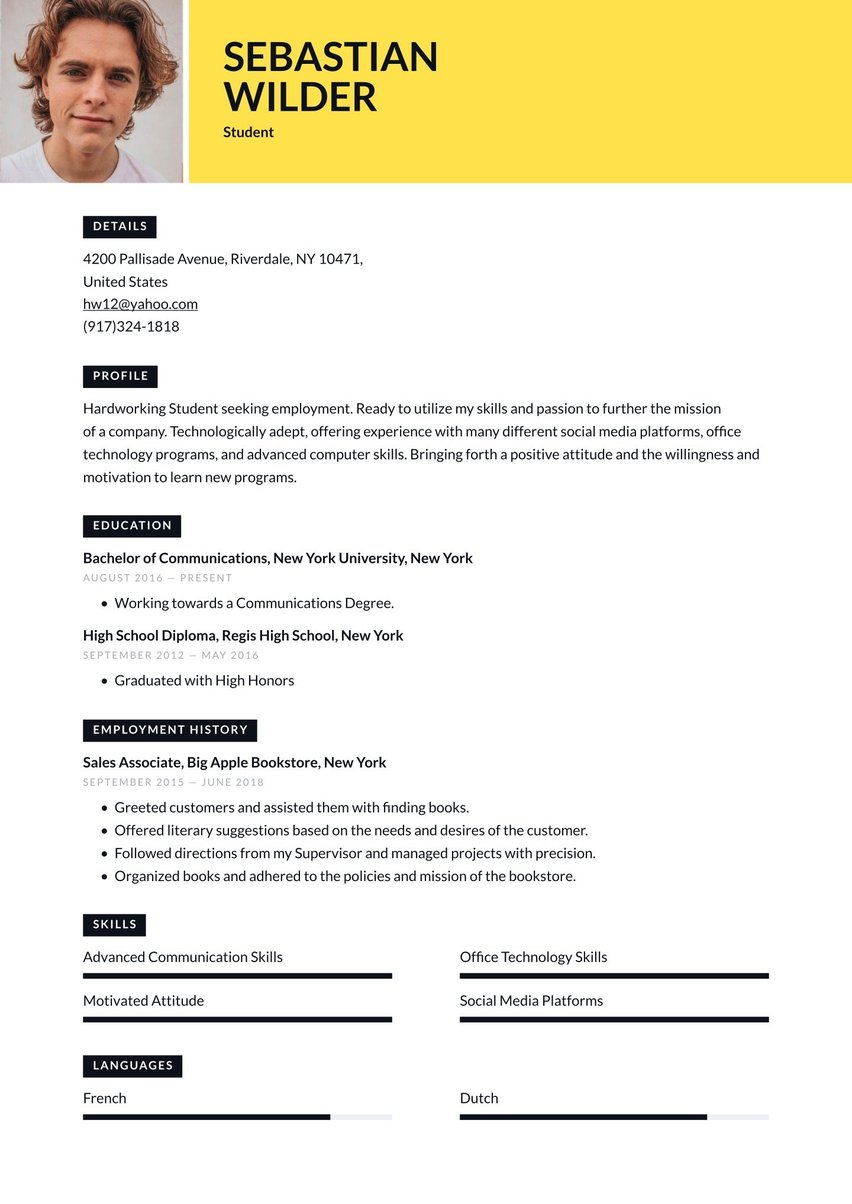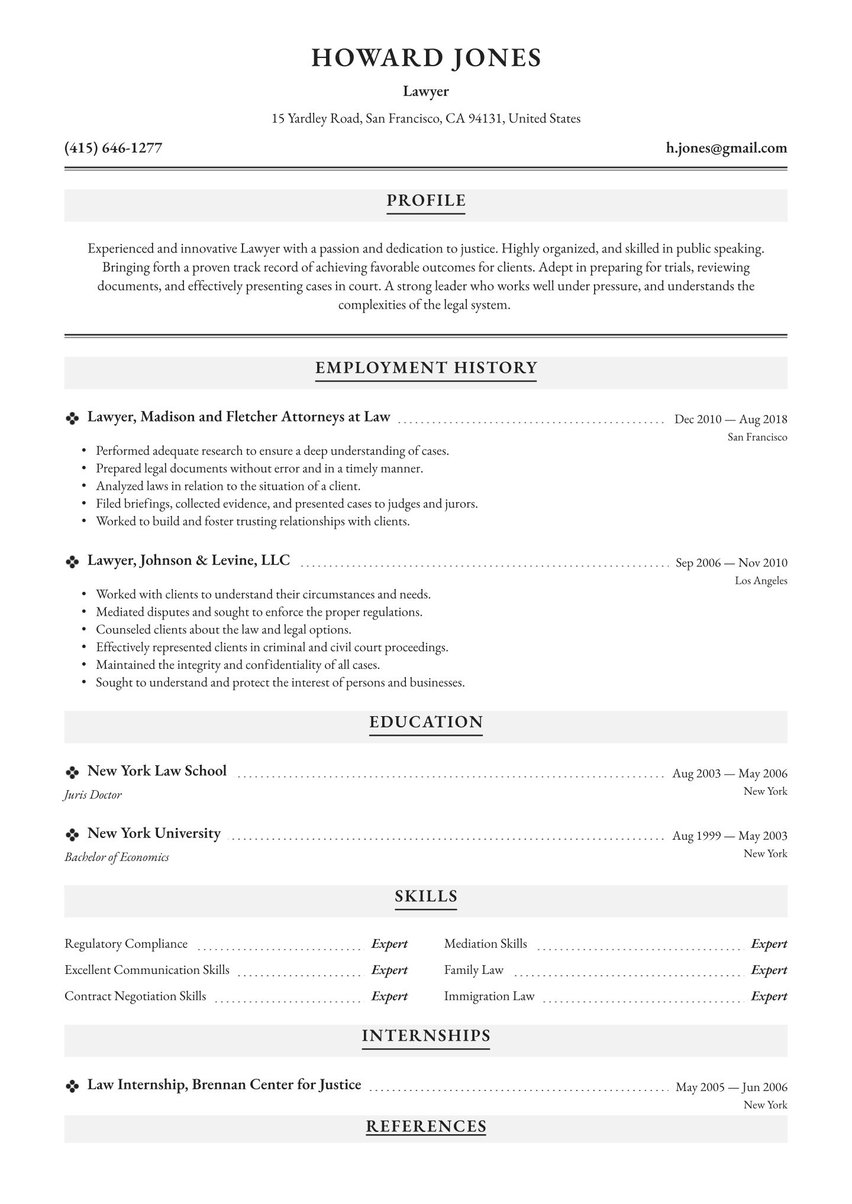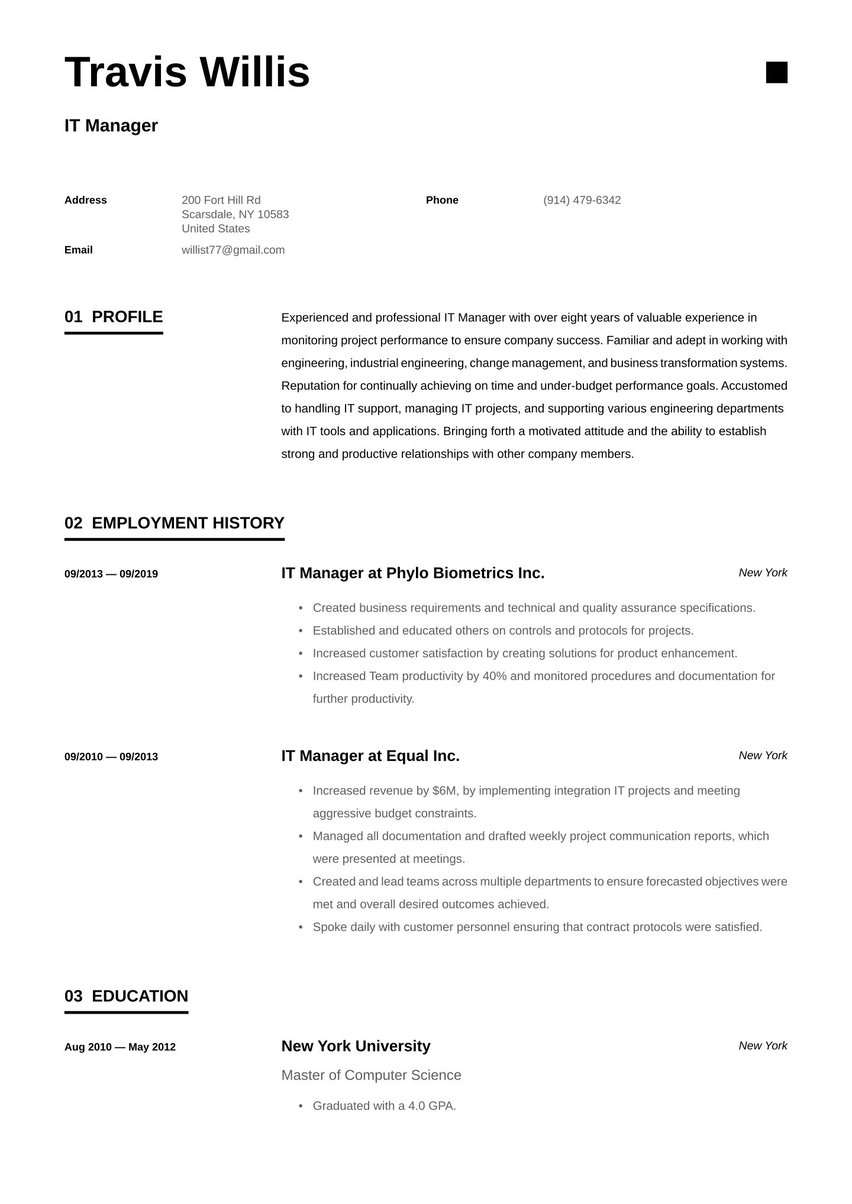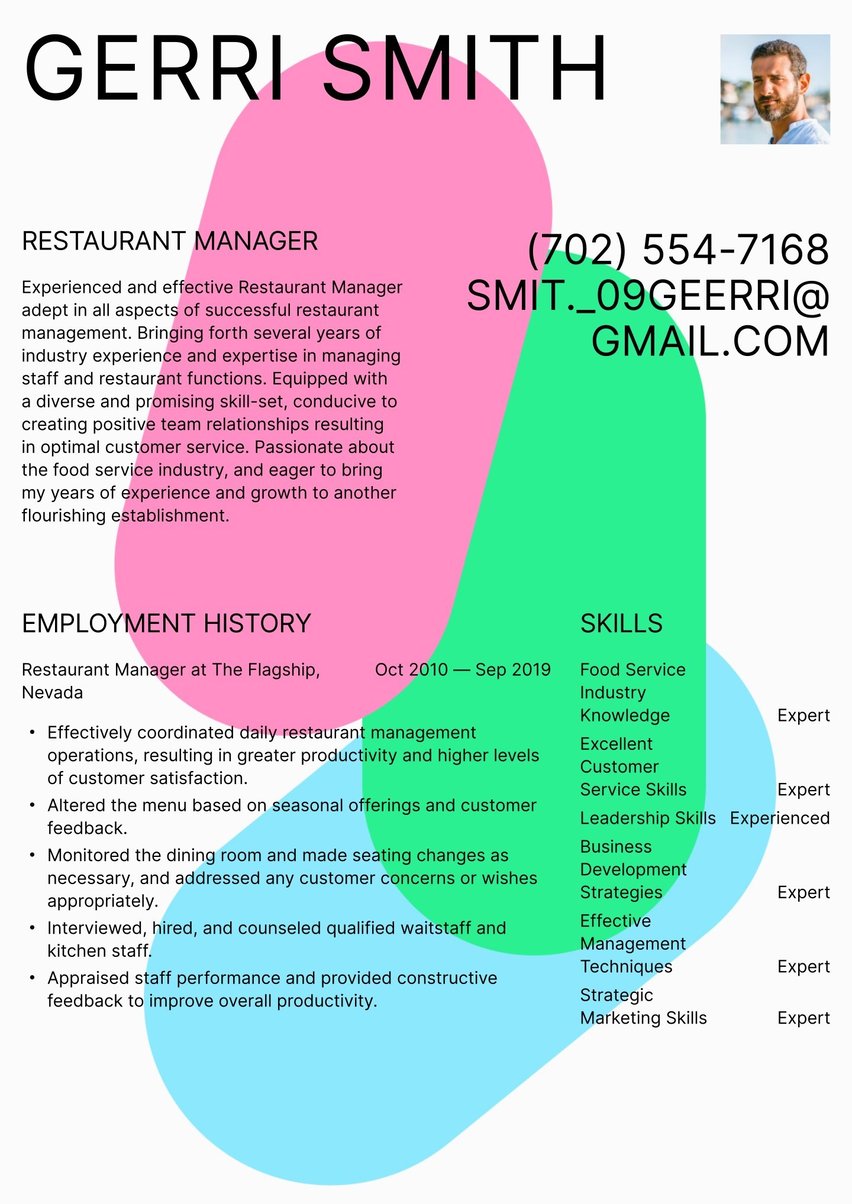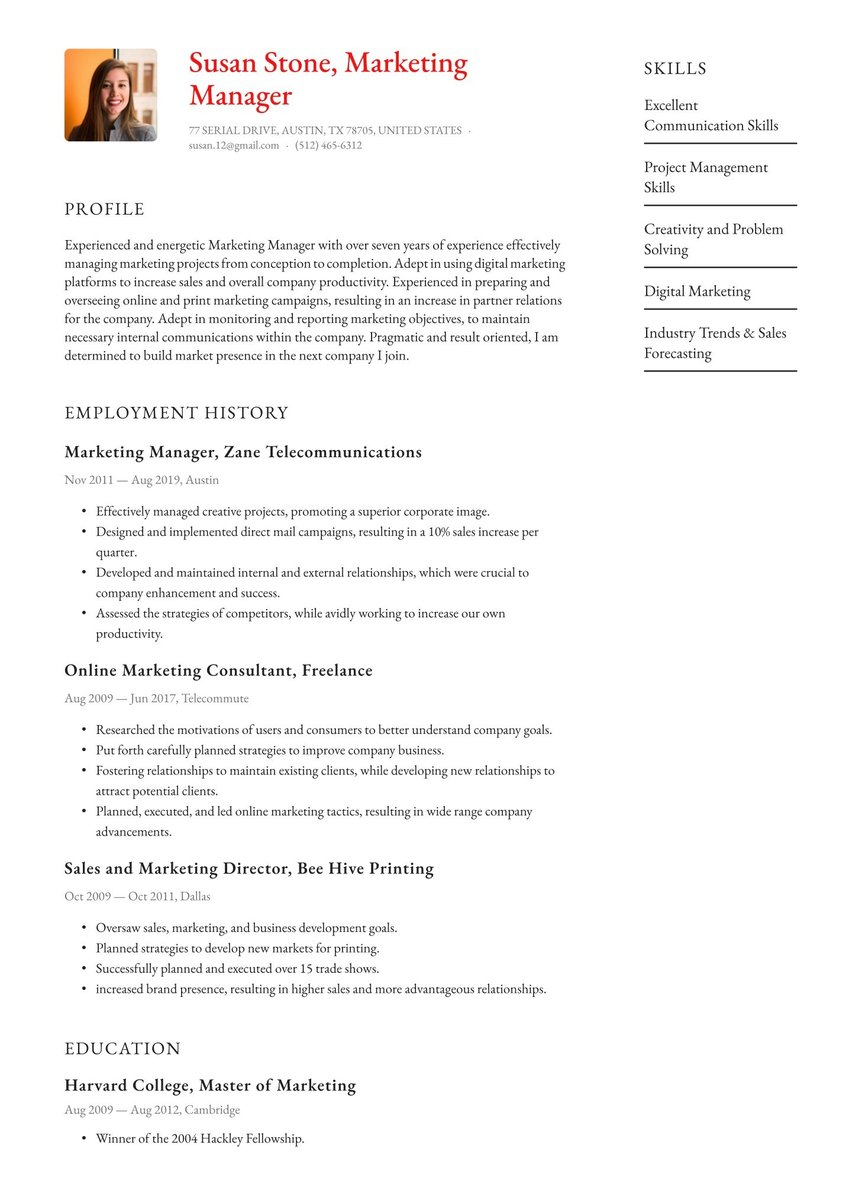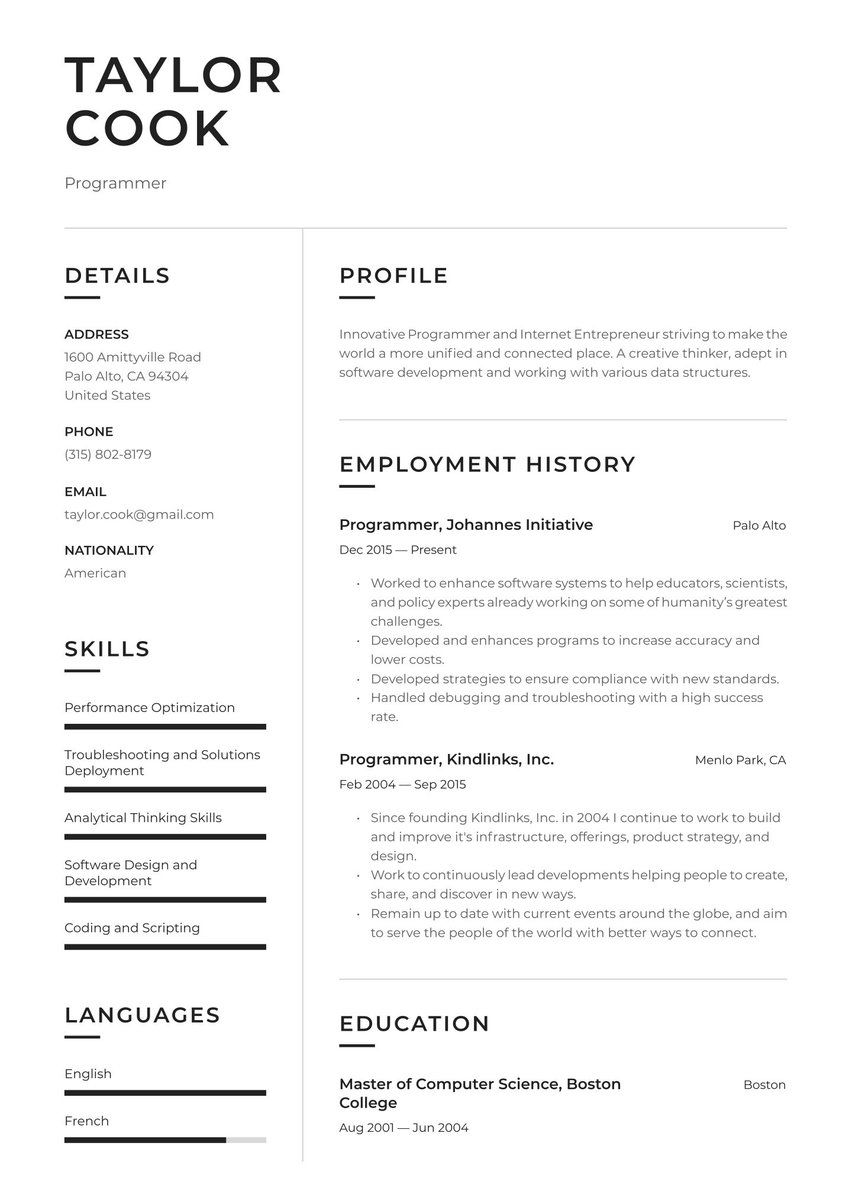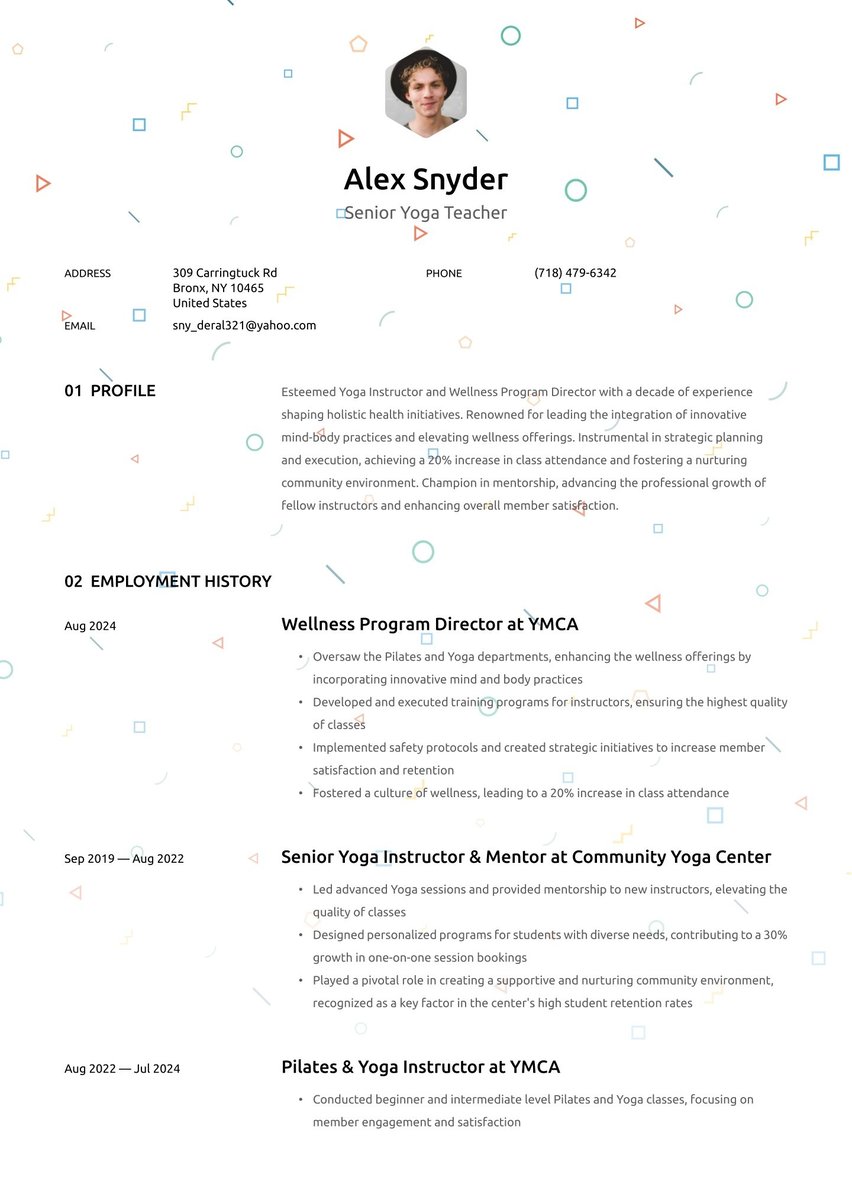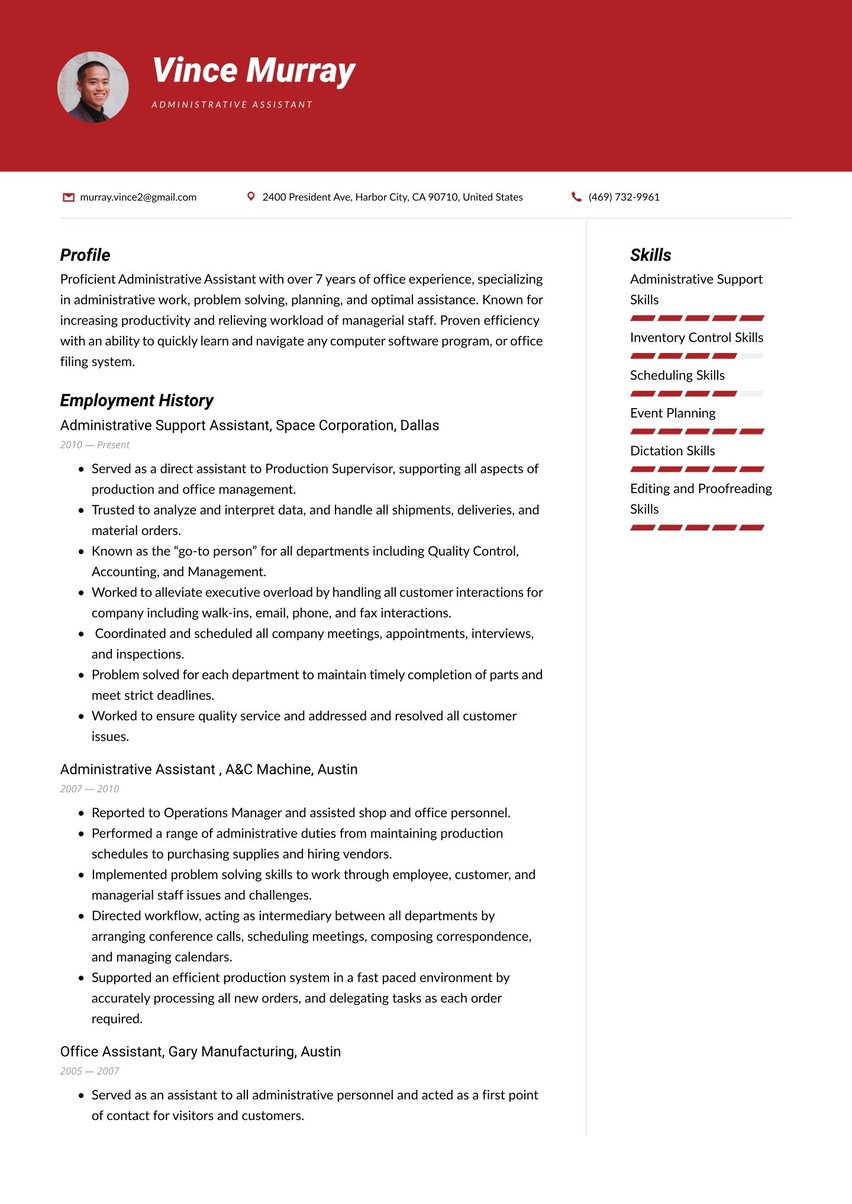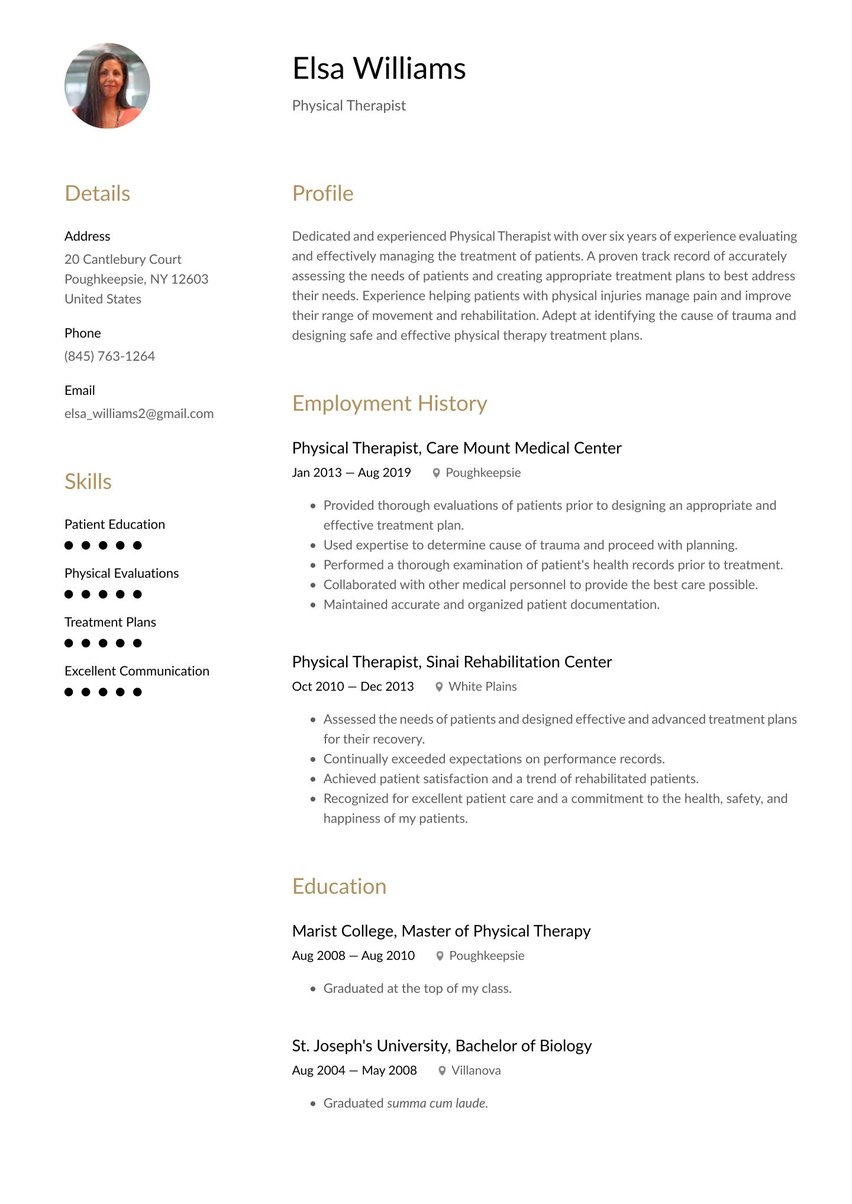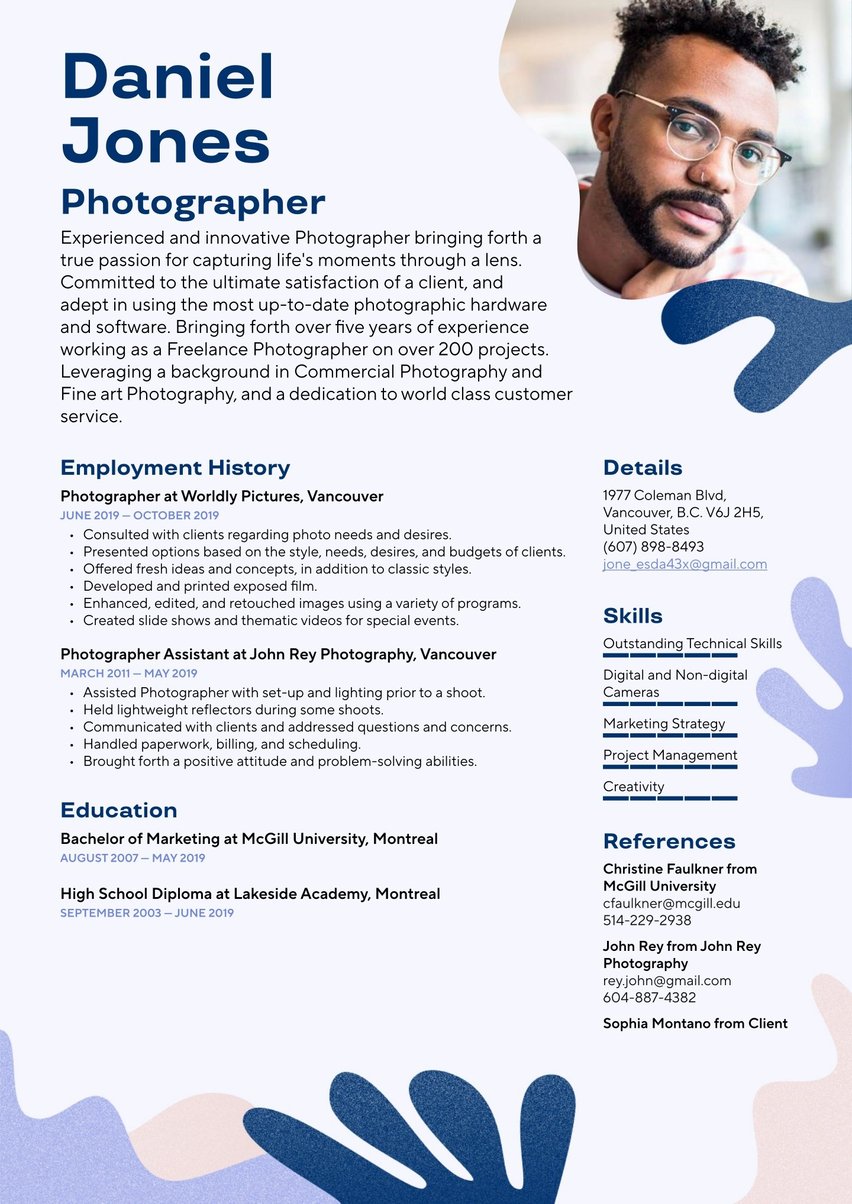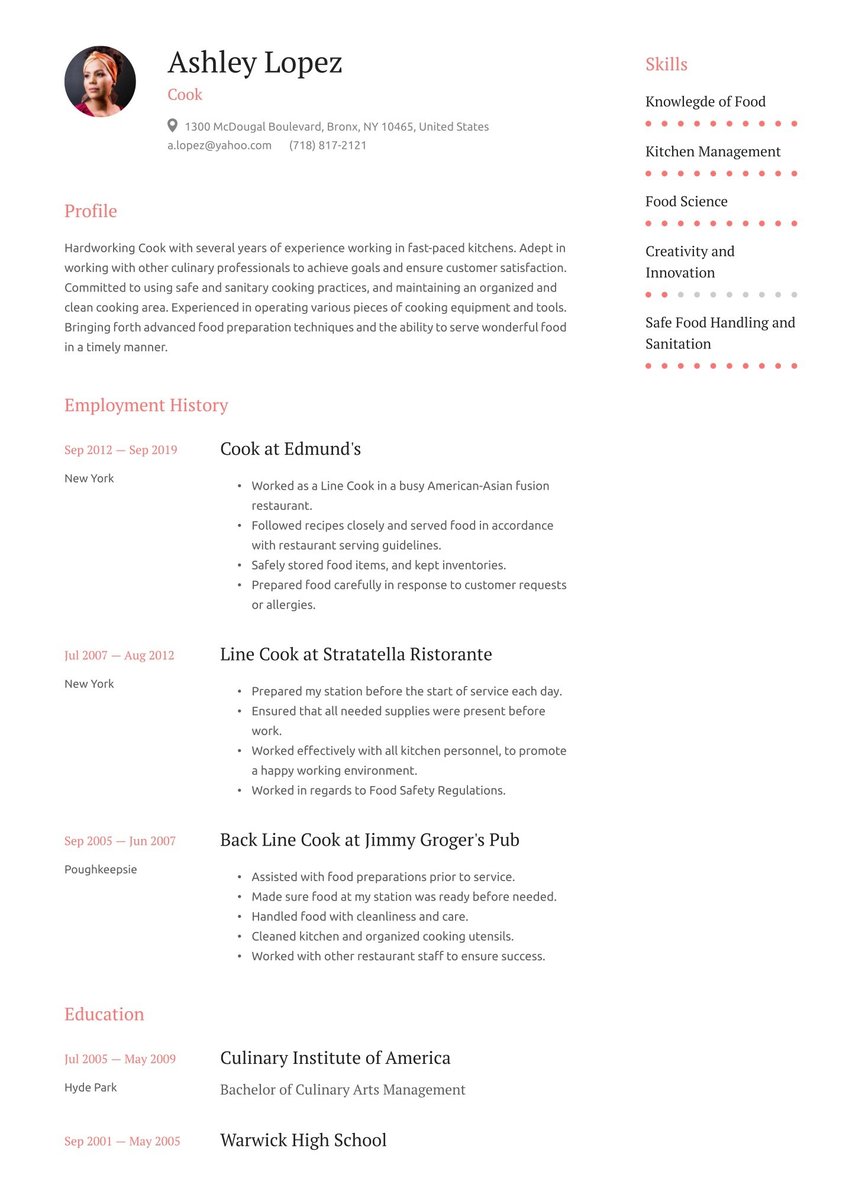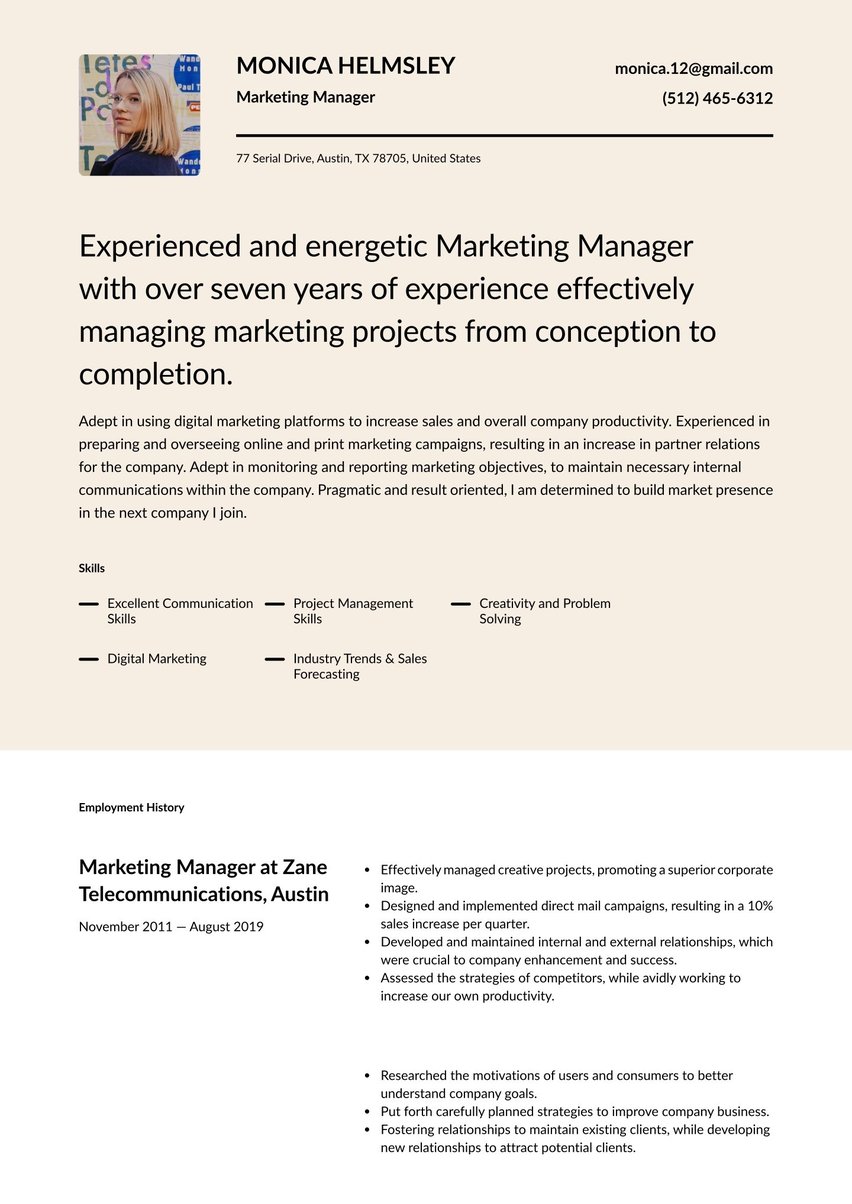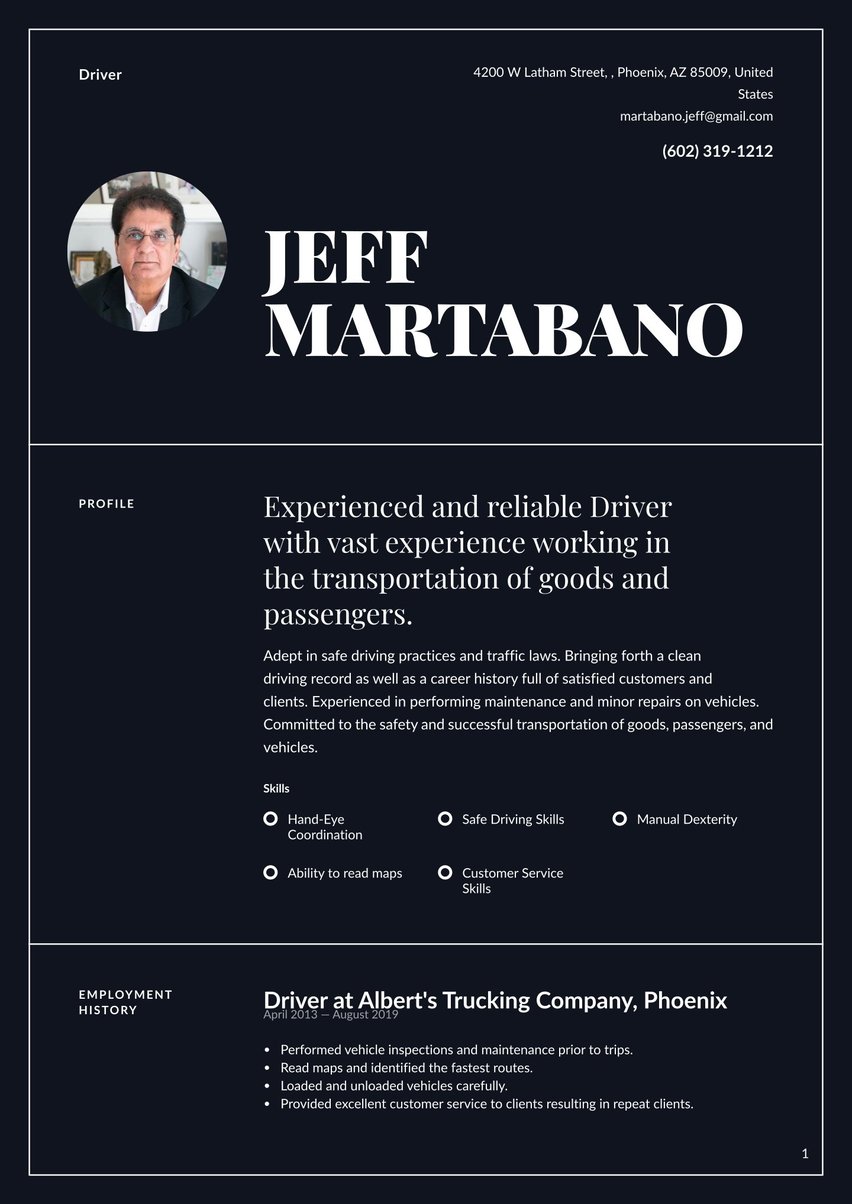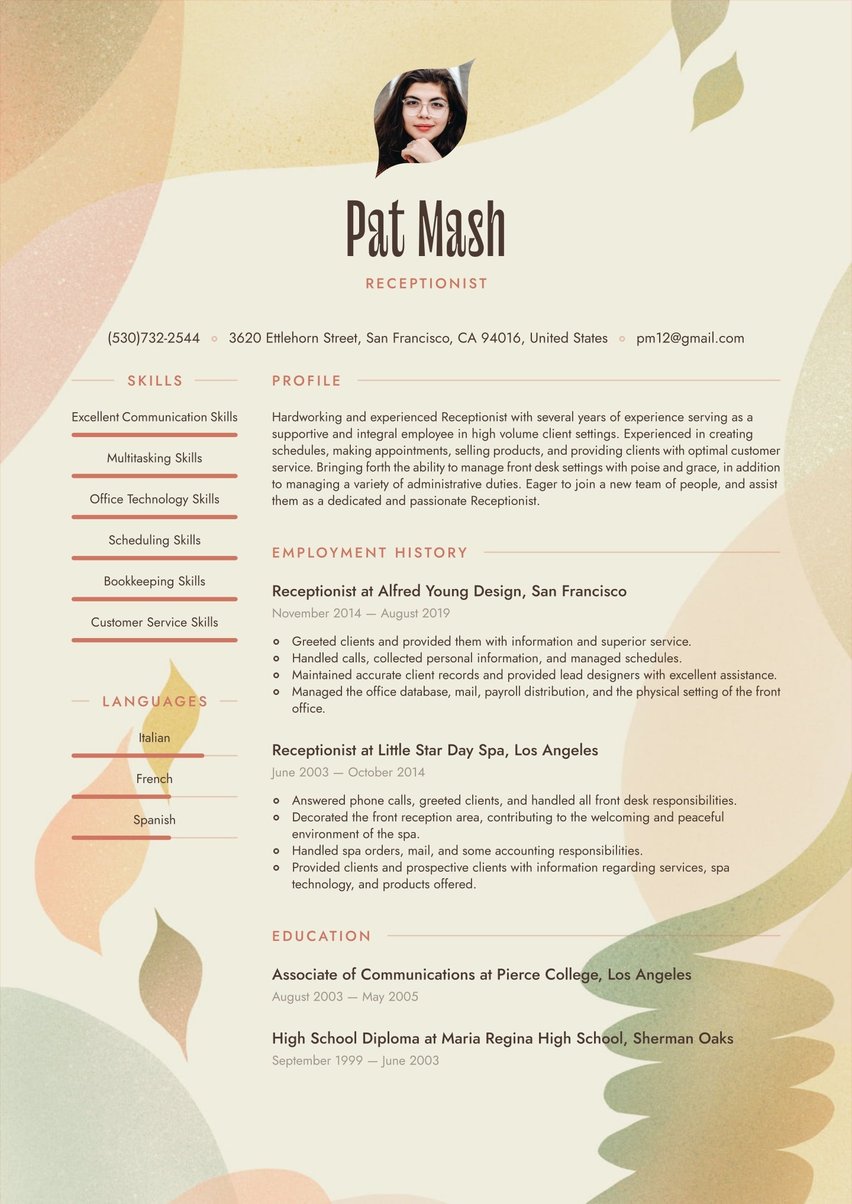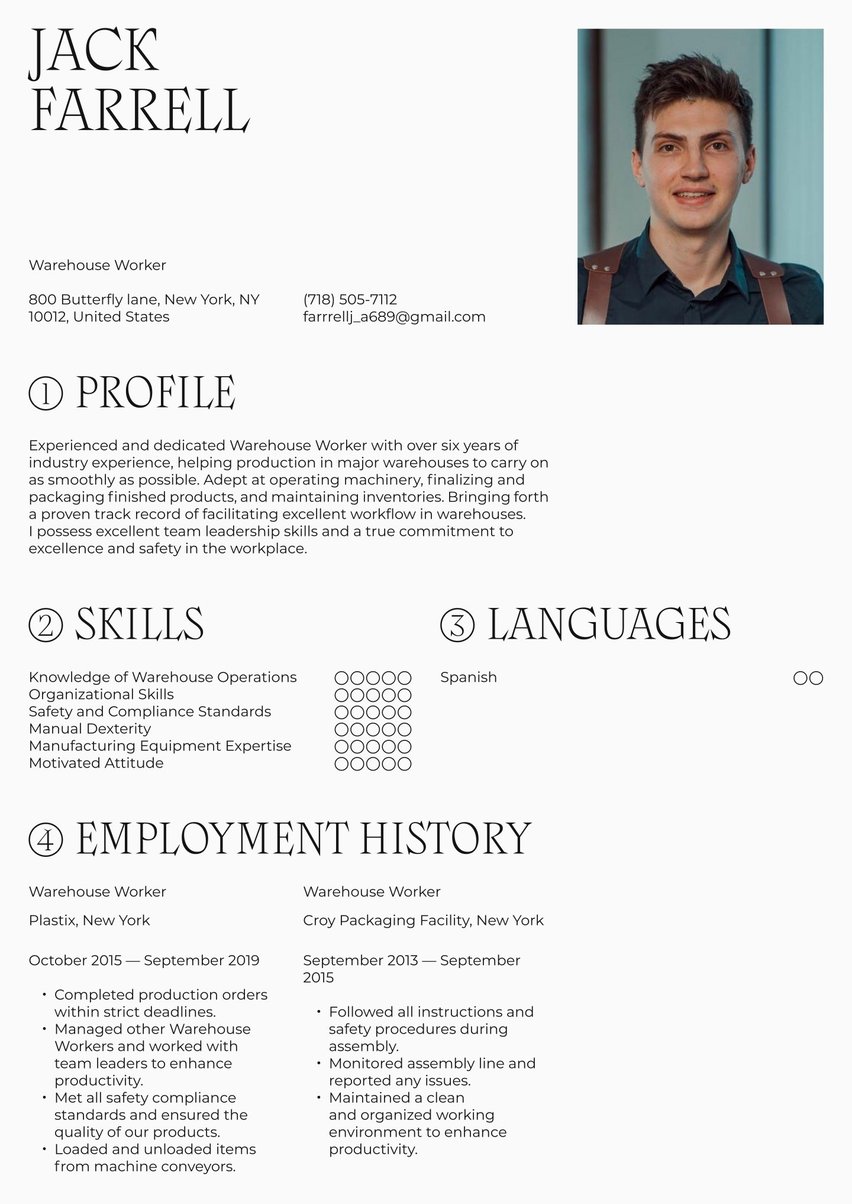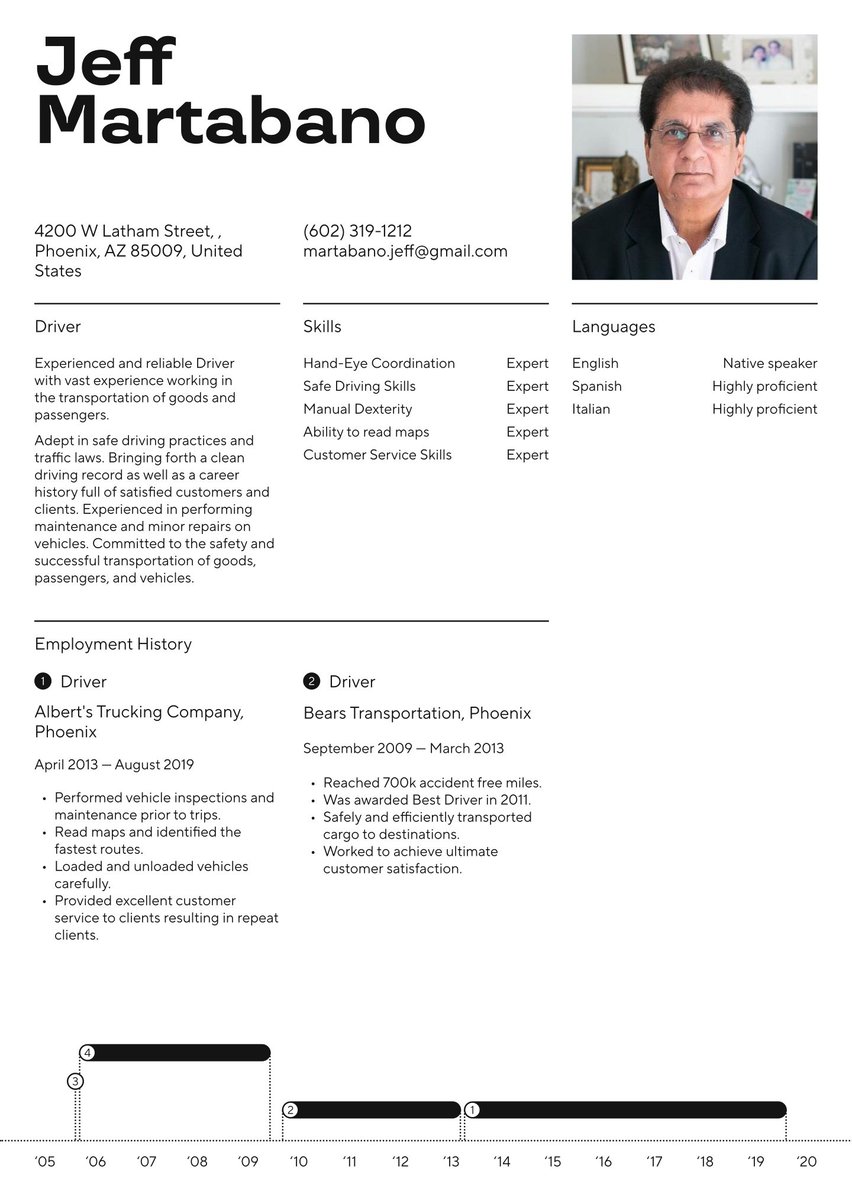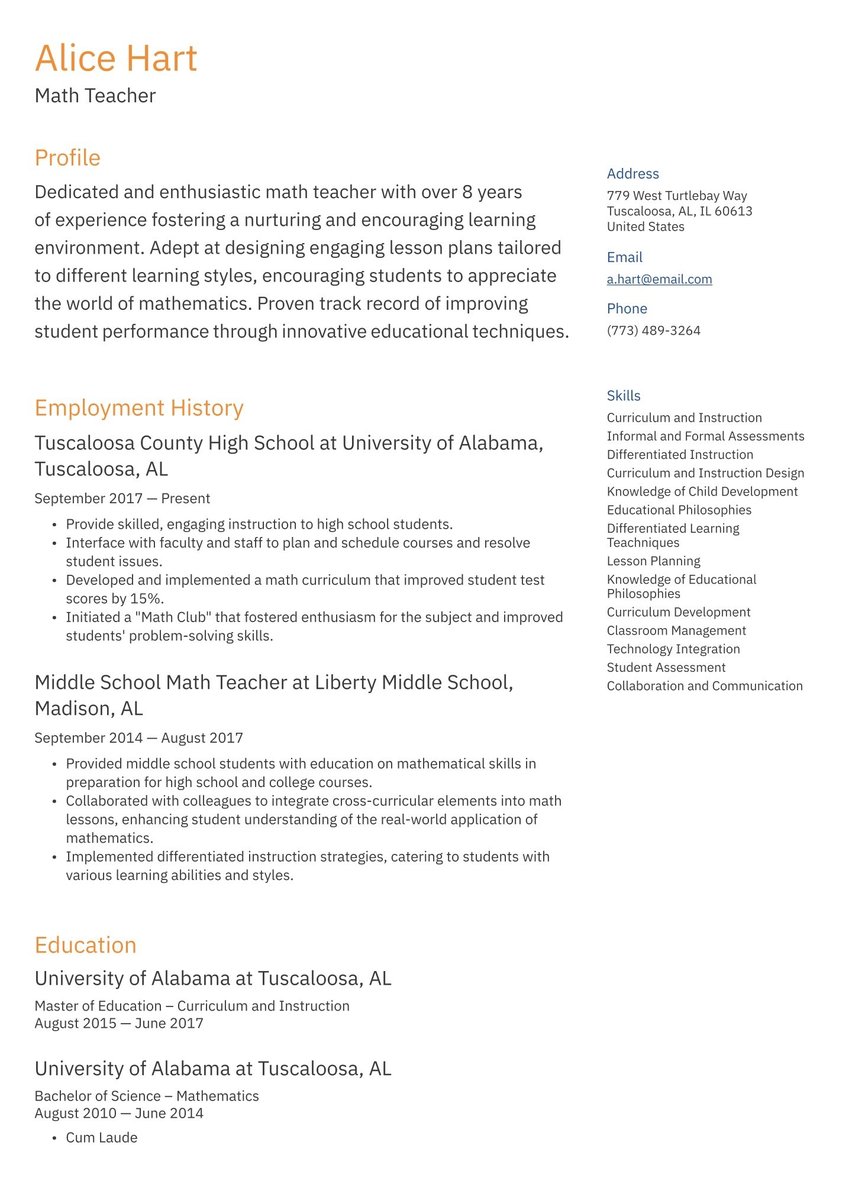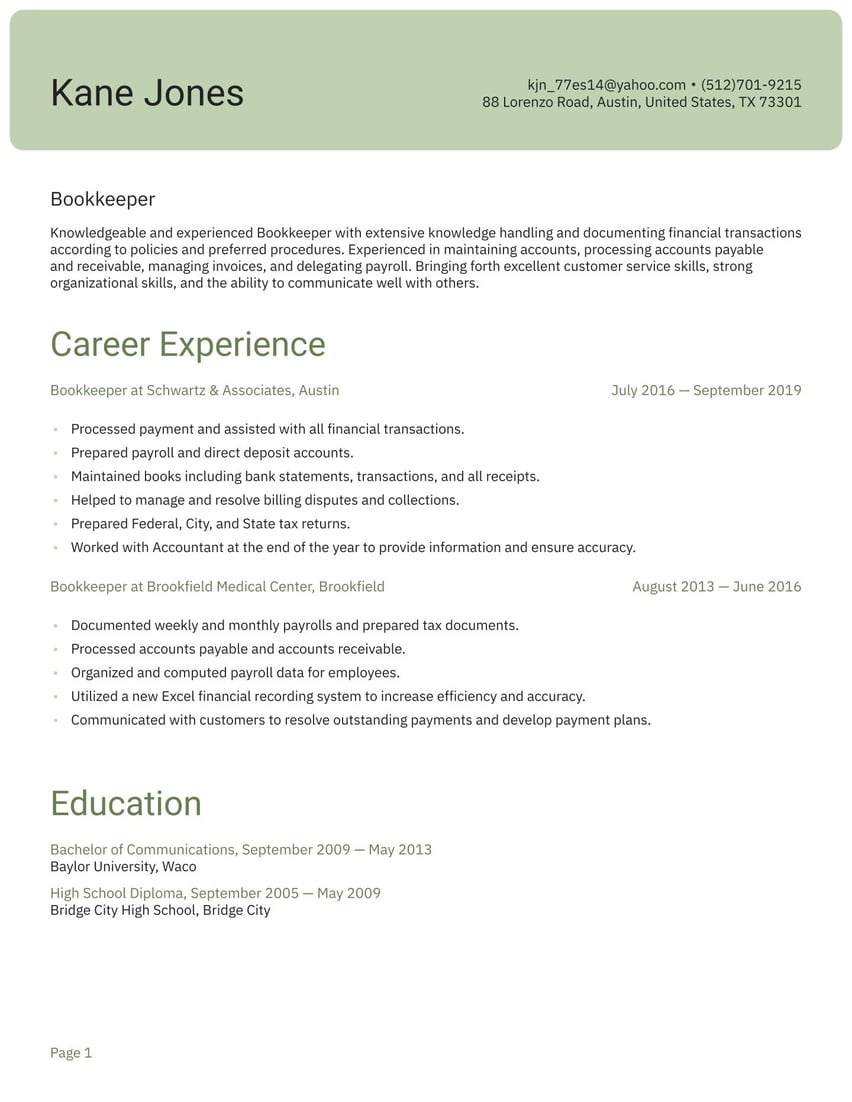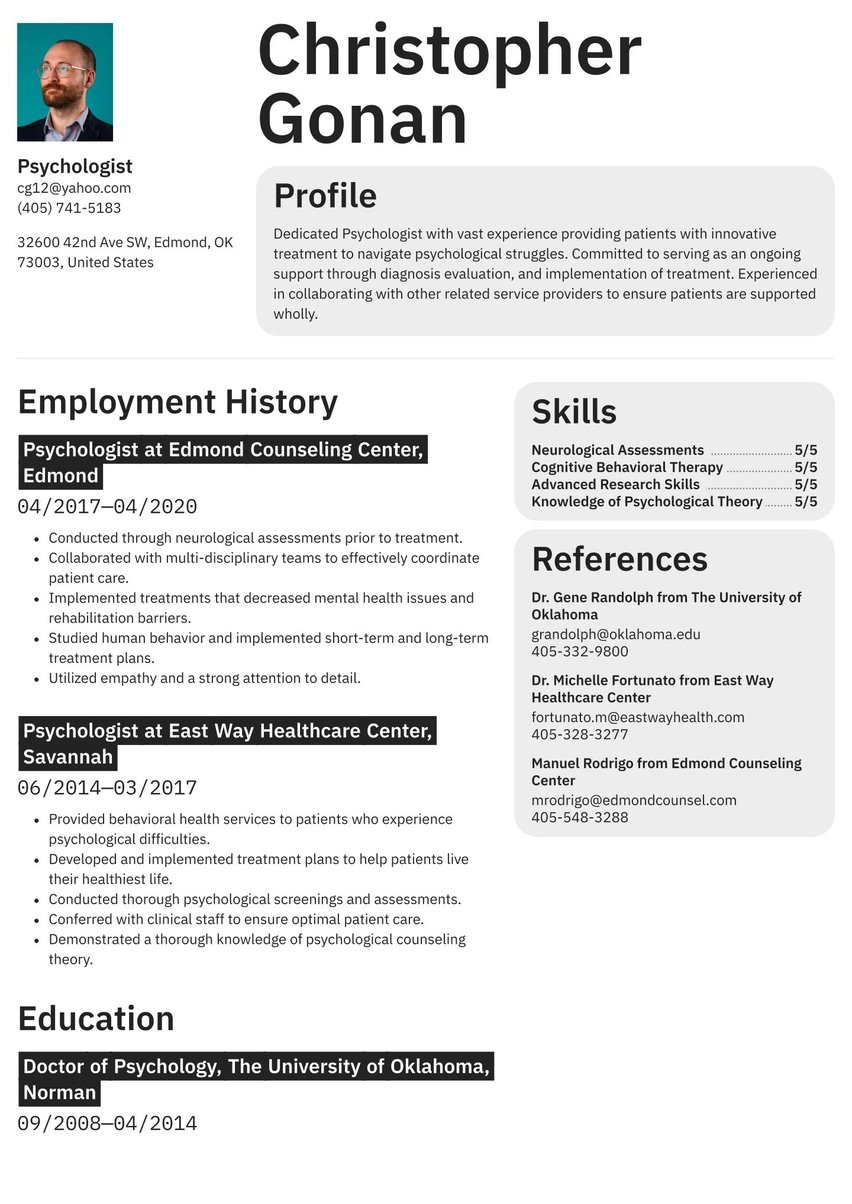Tour guides have a fun job, helping vacationers explore new areas and offering insights to make their trips memorable. When you’re looking for your next tour guide job, you need a resume that highlights your charismatic personality, your customer service mindset, and your deep knowledge of the local area.
Tour Guide resume examples by experience level
A five-star tour guide resume illustrates the qualities that make you an informative, entertaining tour guide while also showing off your regional expertise. But how do you display all your diverse skills in a one-page document?
The key is to create a resume that balances your knowledge and experience while being mindful of the details an employer expects to see. A well-crafted tour guide resume can captivate hiring managers just like you captivate tour groups—leaving a lasting impression that gets you hired.
Resume guide for a tour guide resume
Get a head start on your job search with resume.io. We offer writing guides and resume examples for over 500 professions, and our easy-to-use resume builder will make creating your job application easy.
This resume guide, along with the corresponding tour guide resume example, will cover the following topics:
- How to write a tour guide resume
- The right resume format for tour guide jobs
- Adding your contact information
- Writing a resume summary
- How to highlight your tour guide experience
- Describing your skills and education
- Choosing the right resume design and layout
- What the tour guide job market looks like and how much money you can earn
How to write a tour guide resume
Although the tour guide profession requires creativity, the structure of your resume is not the place to show it off. Stick to the standard format and include the following components on your resume:
- A resume header
- A resume summary (also known as a profile or personal statement)
- An employment history section
- A resume skills section
- An education section
Writing a great resume is like planning a memorable tour: it requires thought, planning, and research. You need to sell your skills to prospective employers, making your qualifications sound as impressive as the sites and landmarks you describe.
You should also target your resume to the specific job you’re seeking. What does the travel company or tour operator need in the guides they hire? Make those skills the centerpiece of your resume.
Here are some other tips to write a successful tour guide resume:
- Highlight your achievements. Most tour guides can memorize facts and plan itineraries. Stand out from the crowd by focusing on the achievements you’ve had in your career. For example, maybe you have repeat customers who book all their travels with you, or perhaps you’re able to form relationships with local businesses to expand the tours you lead.
- Balance your skills. Tour guides need to have hard skills, like historical expertise and event coordination. But you also need to have intangible qualities, such as charisma, that allow you to connect with groups and create memorable experiences. Balance both sets of skills on your resume to prove you’re a guide who can do it all.
- Use keywords. You need to include resume keywords to pass an applicant tracking system (ATS). Additionally, use an ATS-optimized template so the software can easily scan and review your qualifications.
Master the ATS
A great tour guide resume is a start, but if you don’t understand the ATS, it may never get into the hands of a hiring manager. These software programs scan, sort, and assess resumes by looking for keywords and phrases the employer has pegged to the job.
For example, a tour guide job description may list these requirements:
- Itinerary planning
- Knowledge of local culture
- Customer service
- Communication skills
You can integrate those keywords into your resume summary, like this:
Insightful and entertaining tour guide with four years of experience leading tours in Houston, Texas. Skilled in itinerary planning and historical research with a deep knowledge of local culture. Exceptional organization and communication skills. Focused on providing five-star customer service to locals and tourists alike.
For more tips on beating the ATS, check out our article resume ATS optimization.
Choosing the right format for a tour guide resume
Just like a well-planned itinerary, your resume should follow a clear, logical format. It should present your skills and experience in a way that’s easy for hiring managers to follow.
For most tour guides, a reverse-chronological resume is the right choice. This format lists your work experience in chronological order, starting with your most recent position. Use this format if you have recent experience in the travel, tourism, or hospitality industries.
If you’ve never worked as a tour guide before, you may consider another resume format. A functional resume can be a good choice if you’re changing careers or looking for your first job. The functional format focuses on your transferable skills while downplaying your lack of experience.
Some tour guides work multiple jobs or have gaps in their work histories. If that sounds like you, a hybrid resume might be the best option. The hybrid format combines elements of both reverse-chronological and functional formats, placing equal importance on your experience and skills.
Include your contact information
Before you begin a tour, you introduce yourself and explain your background to the group. In the same way, the resume header serves as your introduction to the hiring manager.
Your resume header goes at the top of the page. It should include the following information:
- Your full name and title. Provide your first and last name, followed by the title of the job you’re targeting.
- Professional email address. Your email should be professional. It’s a good idea to use a combination of your name or initials, such as [email protected].
- Phone number. Provide a phone number where a recruiter can easily reach you. Record a professional voicemail greeting in case you miss their call.
- Location. You only need to include your city and state. It’s outdated—and unsafe—to provide your full address on your resume. If you’ll need to relocate for the role, write “Willing to Relocate” next to your location.
- LinkedIn. If you have an updated LinkedIn profile, you can include it with the rest of your contact information.
Don’t include:
- Date of birth. You don’t need to include your date of birth. Providing this information can lead to potential age discrimination.
- Personal details. Leave other personal details, like your marital status and passport number, off your resume.
- Photo or headshot. It’s not necessary to provide a photo of yourself on your resume.
Lena Harper
Adventure Ninja
(104) 391-3791
9876 Aspen Grove Lane
Denver, CO 80203
Single
Passport: X98765432
Make use of a summary section
The best tour guides know how to captivate a group. Your resume summary, also known as a resume profile, should demonstrate your ability to hook an audience with unique, insightful information.
In your resume summary, aim to answer the all-important question: “why should a prospective employer hire you as a tour guide?” Introduce yourself with powerful, positive language. Explain what makes you an exceptional tour guide, whether it’s your in-depth knowledge of a region or your ability to connect with people of all backgrounds.
You can be creative in this freeform paragraph, but maintain a professional tone. Remember that you will be representing the company and that your role requires a strong customer service component. If you have knowledge of the city or site you will be working in, let the prospective employer know.
Your resume summary should also help you stand out from other tour guides applying for the same position. Think about unique qualities you can highlight, like your multilingual skills or your experience with creating custom itineraries.
You can also discuss one or two achievements you’ve had in your career, such as a consistent record of five-star reviews. Including this information can make a recruiter take a closer look at your application.
Need more ideas for your resume summary? Check out these related resume examples:
Find some adaptable summary tour guide resume examples below.
Enthusiastic and outgoing tour guide with a passion for creating memorable experiences for guests. Recently completed a tourism certification with a solid understanding of local landmarks and tourist sites. Skilled in customer service and public speaking.
Energetic and resourceful tour guide with several years of experience accompanying clients on trips to various locations across the globe. Adept at performing research to make optimal travel plans. Experienced in organizing itineraries according to time frames, weather, and local events. Dedicated to providing clients with the best customer service and travel experience possible.
Experienced tour guide with a 15-year record of delivering highly informative, engaging tours in international destinations. Proficient in English, Spanish, Italian, French, and German with strong cultural competency and the ability to adapt tours to meet guests’ needs. Awarded “Tour Guide of the Year” for exceptional service and safety record, including 98% in satisfaction scores with over 350 five-star reviews.
Outline your tour guide work experience: your career itinerary
You’re not going to impress a recruiter with a bulleted list of your responsibilities in past jobs. Instead, think of the work experience section as a declaration of your career achievements.
As you write this section, carefully consider the role you’re applying for and address the needs of that position. Showcase what you’ve already done that demonstrates your ability to do the job well. It’s helpful to use the STAR method to describe your past experiences:
- Start with the situation
- Describe your task
- Explain the action you took to solve the problem
- Detail the results you achieved
With this method, you can show prospective employers how you’ve achieved successful outcomes in your past jobs—and how you can do the same for them. By focusing on the results of your work, you can prove you have what it takes to exceed their expectations for the role.
For example, consider these two resume bullet points, which only focus on a tour guide’s day-to-day duties:
- Led walking tours through historical landmarks and provided commentary for guests
- Answered participants’ questions and anticipated their needs to create a positive tour experience
Now take a look at these reworked versions of the above bullet points:
- Enhanced guest satisfaction by providing engaging tours of historical landmarks, resulting in a 95% positive feedback rating
- Proactively resolved participants’ concerns, contributing to a 50% increase in five-star online reviews
Do you see how those bullet points do a better job of describing a tour guide’s value, compared to the ones above? Use these examples to write specific, targeted bullet points that convince an employer you’re the best tour guide they can hire.
Check out our adaptable tour guide employment history resume sample below.
Universal Studios Tour Guide at Walt Disney World Resort, Orlando
April 2015 - September 2019
- Greeted clients and developed itineraries based on their interests and needs.
- Escorted clients through the real working movie studios.
- Provided clients with informative literature and provided access to special departments.
- Showed clients around different points of interest and answered any and all questions to the best of my ability.
Tour Guide at Orlando Trip Experts, Orlando
May 2010 - March 2015
- Worked with clients to develop trip itineraries that made sense in terms of time, budget, and goals.
- Researched places to gather information about attractions, points of interest, history, weather, and other important facts.
- Effectively communicated with clients in English, Spanish, and Italian.
- Accompanied some clients on trips, serving as a translator and assistant throughout the trip.
Include key relevant skills for a tour guide
Before a traveler books a tour, they may want to see the highlights at a glance so they know what to expect. Recruiters use the same mindset when they scan resumes. The skills section gives them an easy way to filter out applicants who don’t fit their needs. That’s why you need to curate this section carefully.
In this section, highlight a mix of hard and soft skills. Your hard skills, such as multilingual communication, knowledge of local culture, or itinerary software show you’re capable of handling a tour guide’s duties. Your soft skills—interpersonal traits like communication skills, time management, presentation skills—tell a recruiter you’re able to engage with tour participants and make them feel comfortable.
Our resume builder allows you to choose from pre-written skills and indicate your level of proficiency. You can also add the unique skills you have for the role.
Here’s what the skills box looks like in our tour guide resume sample.
Key Skills and Proficiencies
You can also discuss your skills in other parts of your resume. Provide examples of times when you’ve used your skills to guide successful tours or meet customers’ needs.
For example, you can highlight some of these skills in your work experience section and resume summary:
- Detailed knowledge of the area. Explain how you go beyond memorizing key facts to provide customers with entertaining stories and unknown information.
- Communication skills. Discuss how you communicate with people on tours, including listening to customers and answering their questions.
- Organization. A tour guide needs to plan detailed, structured tours, so describe how you use your organizational skills to approach this task.
When in doubt, look at the skills a hiring manager has listed in the job description. Include similar skills on your resume to prove you can meet their needs.
Detail your education & relevant tour guide certifications
There are no formal education requirements for tour guides, although most in the profession have a high school diploma. In your education section, list your diploma if that’s the highest level of education you’ve completed. If you have an associate degree or higher, remove your high school diploma and provide the name of your degree instead.
In this section, you can also include information about ongoing training you’ve completed, such as:
- Coursework and classes. If you’ve taken classes related to travel or tourism, list those below your formal education. You can also list any language or cultural courses you’ve taken.
- Certifications. Having a tour guide certification can show employers your commitment to the job. Additionally, you can list a CPR or first aid certification here if it’s active.
- Professional organizations. If you belong to an industry organization, such as the International Association of Tour Directors and Guides, provide this information in your education section. Many communities also have local groups you can join to showcase your specialized knowledge of a city or region.
Bachelor of Communications, University of Florida, Gainesville
August 2006 - May 2010
High School Diploma, Jacksonville High School, Jacksonville
September 2002 - May 2006
Pick the right layout & design suited for a tour guide resume
Helping tourists find the perfect Instagram shot is part of your job, so you understand the importance of visual impressions. Make sure the landscape of your resume is just as awe-inspiring.
Here are some principles to keep in mind:
- Use a professional design. Choose a clean, structured design with professional fonts, aligned text, and standard margins.
- Add color if it’s not distracting. A splash of color is eye-catching, but too much color can distract the hiring manager from your qualifications. The same goes for graphics, shapes, and other visual elements.
- Make the key points stand out. Use a bold font for your contact information and section headings. This formatting makes it easy for a recruiter to skim your resume and find important information quickly.
- Find a resume template. You don’t have to build your resume from scratch. Consider using a professionally designed resume template to avoid formatting mistakes.
Our ATS-optimized resume templates can help you structure your resume in a format that tour operators will recognize and appreciate. Take a look at the templates we offer to find the right one to highlight your travel expertise.
Tour guide text-only resume example
Profile
Energetic and resourceful Tour Guide with several years of experience accompanying clients on trips and to various locations in different parts of the world. Adept at performing research in an effort to make optimal travel plans. Experienced in organizing itineraries according to time frames, weather, and events. Dedicated to providing clients with the best customer service and travel experience possible.
Employment history
Universal Studios Tour Guide at Walt Disney World Resort, Orlando
April 2015 - September 2019
- Greeted clients and developed itineraries based on their interests and needs.
- Escorted clients through the real working movie studios.
- Provided clients with informative literature and provided access to special departments.
- Showed clients around different points of interest and answered any and all questions to the best of my ability.
Tour Guide at Orlando Trip Experts, Orlando
May 2010 - March 2015
- Worked with clients to develop trip itineraries that made sense in terms of time, budget, and goals.
- Researched places to gather information about attractions, points of interest, history, weather, and other important facts.
- Effectively communicated with clients in English, Spanish, and Italian.
- Accompanied some clients on trips, serving as a translator and assistant throughout the trip.
Skills
- Excellent Communication Skills
- Advanced Planning Skills
- Time Management Skills
- Guided Tour Planning
- CPR and First Aid Certified
- Creative Problem Solving
Education
Bachelor of Communications, University of Florida, Gainesville
August 2006 - May 2010
High School Diploma, Jacksonville High School, Jacksonville
September 2002 - May 2006
Tour guide job market & outlook
Tour guides can work for travel companies, tour operators, historical sites, museums, and other similar institutions. Some tour guides work independently, offering their own services to travelers. The demand for tour guides can fluctuate based on the season, especially in popular tourist destinations.
- Museums, historical sites, and similar institutions employ the highest number of tour guides—around 15,280, according to the U.S. Bureau of Labor Statistics (BLS).
- Around 7,380 tour guides work in the travel arrangement and reservation services sector.
- A smaller number of tour guides (2,350) work in the scenic and sightseeing transportation sector.
What type of salary you can expect as a tour guide
Tour guides can earn a comfortable salary, though your wage may depend on where you work. According to the BLS, tour guides who work in museums and historical sites earn an average of $35,060 per year. In comparison, tour guides working for travel and reservation companies make $45,200 annually, on average.
Tour guides often earn tips on top of their salaries, which may boost the pay that you take home.
Key takeaways for building a tour guide resume
Your tour guide resume description should not only outline your skills and experience but should also convince an employer you can engage and entertain. Target your resume to the job you’re seeking. Make sure you emphasize your knowledge of the place or area you’ll be showcasing on tours. Check out our tour guide resume sample for more ideas and inspiration for writing a wanderlust-worthy resume.
Start your tour guide job search with a resume builder, but you don’t have to stop there. With resume.io’s 18 powerful tools, you can search for travel jobs, track your progress, prepare for interviews, and negotiate a salary—all with our powerful career toolkit at your fingertips.


.jpg)

.jpg)
